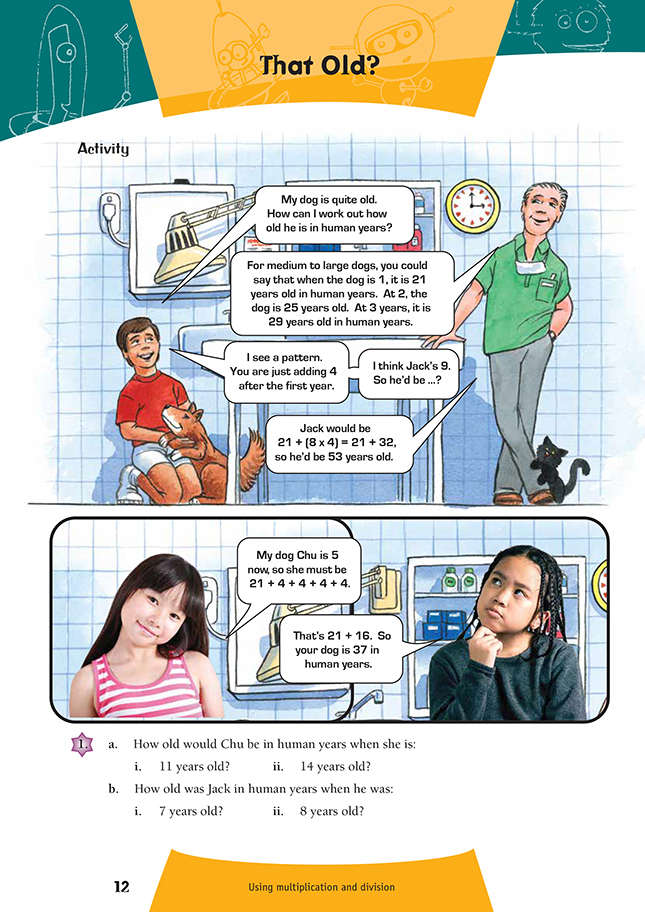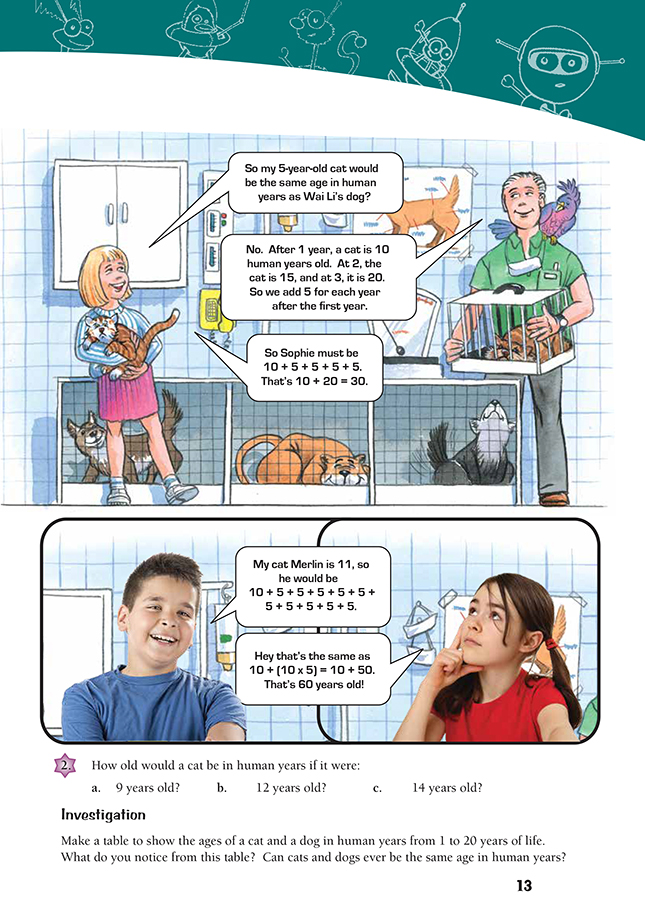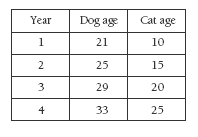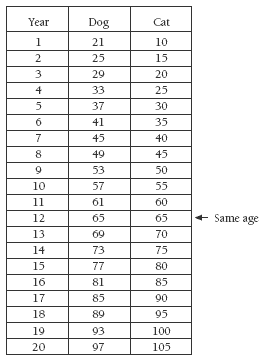This is a level 3 number activity from the Figure It Out series. It relates to Stage 6 of the Number Framework.
A PDF of the student activity is available.
Click on the image to enlarge it. Click again to close. Download PDF (423 KB)
use mental strategies to solve multiplication problems
FIO, Level 3, Number, Book 2, That Old? pages 12-13
This activity uses a fun context that often intrigues students and provides an opportunity for them to develop multiplicative strategies. The scenario also encourages the finding of rules to use a sequential number pattern.
Before the students start the activity, have them share their understanding of the relationship between cat or dog ages and human age. They may mention multiplying the animal’s age by 7. (This is a common fallacy. For example, for dogs, it depends on the dog’s breed and size, as implied in the vet’s first comment.)
Refer the students to the speech bubbles and have them compare the way the equations are written and the thinking behind them. Chu’s owner, Wai Li, uses addition by 4s to show the pattern in the expression 21 + 4 + 4 + 4 + 4, while the vet, who uses multiplication to describe Jack’s age, substitutes 8 x 4 for the repeated addition of 4 in the equation 21 + (8 x 4) = 21 + 32.
Extend very able students by challenging them to find the general rule for this expression. In the vet’s explanation, it is 4(n – 1) + 21, where n is the number of years old for a dog. This can also be expressed as 4n + 17. Hint: Because the pattern grows in 4s, the general rule must be a variation of the 4 times table.
In question 2, the cat’s “human” age progresses by adding 5, so the general rule here must be related to the 5 times table. For each year (n), the cat’s human age is 5n + 5 or (5n – 1) + 10.
Investigation
Ask the students to work in problem-solving groups of four students and discuss a way to start solving the problem. As an alternative to a trial-and-improvement strategy, the students may find a chart like the one below useful:
Have the students estimate at what year the dog and cat ages are likely to coincide and then complete the chart to confirm the estimate.
Some students may like to contact a local pet expert to see if they have other ways of comparing the ages of cats and dogs or other animals to human ages.
Some very able students could be shown the two general rules for the cat and dog as described earlier. Explain to them that the investigation could be solved by seeing that the cat’s rule must equal the dog’s rule at the year we want to find. So 5n + 5 = 4n + 17. They may see that the dog has 1 lot of n less than the cat but has 12 more years, so therefore the ages coincide when n = 12 years.
Answers to Activities
1. a. i. 61 years old. (21 + [10 x 4])
ii. 73 years old. (21 + [13 x 4])
b. i. 45 years old. (21 + [7 x 4])
ii. 49 years old. (21 + [7 x 4])
2. a. 50 years old. (10 + [8 x 5])
b. 65 years old. (10 + [11 x 5])
c. 75 years old. (10 + [13 x 5])
Investigation
The table shows the + 4 pattern for dogs and the + 5 pattern for cats. Although the dog starts at a higher age (21), the cat gradually catches up until it is the same age in human years after 12 years of life. The cat’s age in human years then gradually gets higher than the dog’s age.



